Welcome to our 6th annual annual Black Hole Friday! Check out these black hole deals from the past year as you prepare to
head out for a shopping spree or hunker down at home to avoid the crowds.
First things first, black holes have one basic rule:
They are so incredibly dense that to escape their surface you’d have to travel
faster than light. But light speed is the cosmic speed limit … so nothing
can escape a black hole’s surface!
Black
hole birth announcements
Some black holes form when a very large star
dies in a supernova explosion and collapses
into a superdense object. This is even more jam-packed than the crowds at your
local mall — imagine an object 10 times more massive than the Sun squeezed into
a sphere with the diameter of New York City!
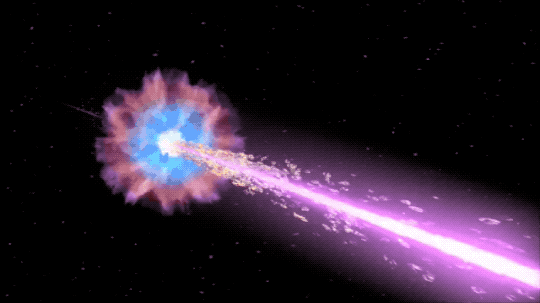
Some of these collapsing stars also signal
their destruction with a huge burst of gamma rays. Our Fermi Gamma-ray Space Telescope and
Neil
Gehrels Swift Observatory continuously seek out the
signals of these gamma ray bursts — black hole birth announcements that
come to us from across the universe.
NICER
black holes
There are loads of stellar mass black holes,
which are just a few 10s of times the Sun’s mass, in our home galaxy alone —
maybe even hundreds of millions of them! Our Neutron Star
Interior Composition Explorer, or NICER for short,
experiment on the International Space Station has been studying some of those relatively nearby black holes.
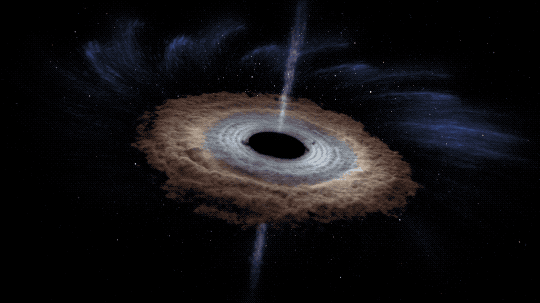
Near one black hole called GRS 1915+105, NICER found disk
winds — fast streams of gas created by heat or pressure. Scientists are still figuring out some puzzles about these types of wind.
Where do they come from, for example? And do they change the way material falls
into the black hole? Every new example of these disk winds helps astronomers
get closer to answering those questions.
Merging
monster black holes
But stellar mass black holes aren’t the only
ones out there. At the center of nearly every large galaxy lies a supermassive
black hole — one with the mass of millions or billions of Suns smooshed into a region no bigger than our solar
system.
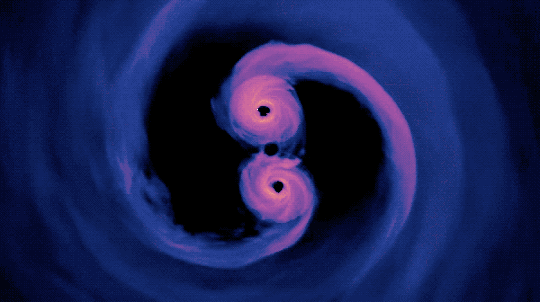
There’s still some debate about how these
monsters form, but astronomers agree that they certainly can collide and
combine when their host galaxies collide and combine. Those black holes will
have a lot of gas and dust around them. As that material is pulled into the
black hole it will heat up due to friction and other forces, causing it to emit light. A group of scientists wondered what light it
would produce and created this mesmerizing visualization showing that most of the light
produced around these two black holes is UV or X-ray light.
We can’t see those wavelengths with our own eyes, but many telescopes can.
Models like this could help scientists know what to look for to spot a merger.
Black
holes power bright gamma ray lights
It also turns out that these supermassive
black holes are the source of some of the brightest objects in the gamma ray
sky! In a type of galaxy called active galactic nuclei (also called “AGN” for short)
the central black hole is surrounded by a disk of gas and dust that’s
constantly falling into the black hole.
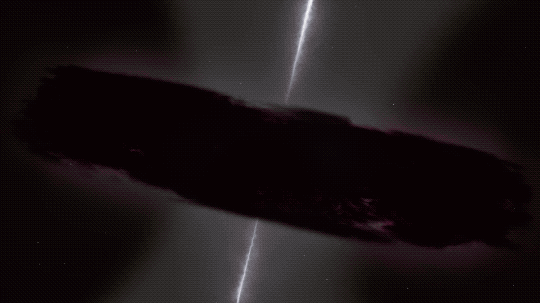
But not only that, some of those AGN have jets
of energetic particles that are shooting out from near the black hole at nearly
the speed of light! Scientists are studying these jets to try to understand how
black holes — which pull everything in with their huge amounts of gravity —
provide the energy needed to propel the particles in these jets. If that jet is
pointed directly at us, it can appear super-bright in gamma rays and we call it
a blazar. These blazars make up more than half of the sources our Fermi
space telescope sees.
Catching
particles from near a black hole
Sometimes scientists get a two-for-one kind of
deal when they’re looking for black holes. Our colleagues at the IceCube Neutrino Observatory
actually caught a particle from a blazar 4 billion light-years
away. IceCube lies a mile under the ice in Antarctica and
uses the ice itself to detect neutrinos, tiny speedy particles that weigh
almost nothing and rarely interact with anything. When IceCube caught a
super-high-energy neutrino and traced its origin to a specific area of the sky,
they turned to the astronomical community to pinpoint the source.
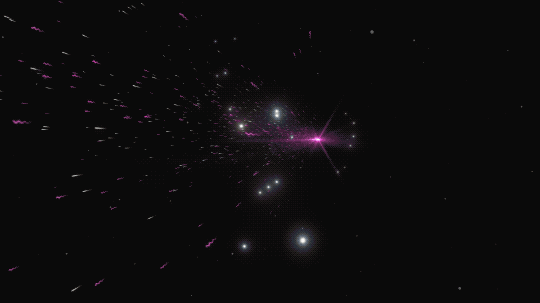
Our Fermi spacecraft scans the entire sky
about every three hours and for months it had observed a blazar producing more
gamma rays than usual. Flaring is a
common characteristic in blazars, so this didn’t attract
special attention. But when the alert from IceCube came through, scientists
realized the neutrino and the gamma rays came from the same patch of sky! This
method of using two or more kinds of signals to learn about one event or object
is called multimessenger astronomy, and it’s helping us learn a lot about the
universe.

Get more fun facts and information about black
holes HERE
and follow us on
social media today for other cool facts and findings
about black holes!
Make
sure to follow us on Tumblr for your regular dose of space: http://nasa.tumblr.com.







Комментариев нет:
Отправить комментарий